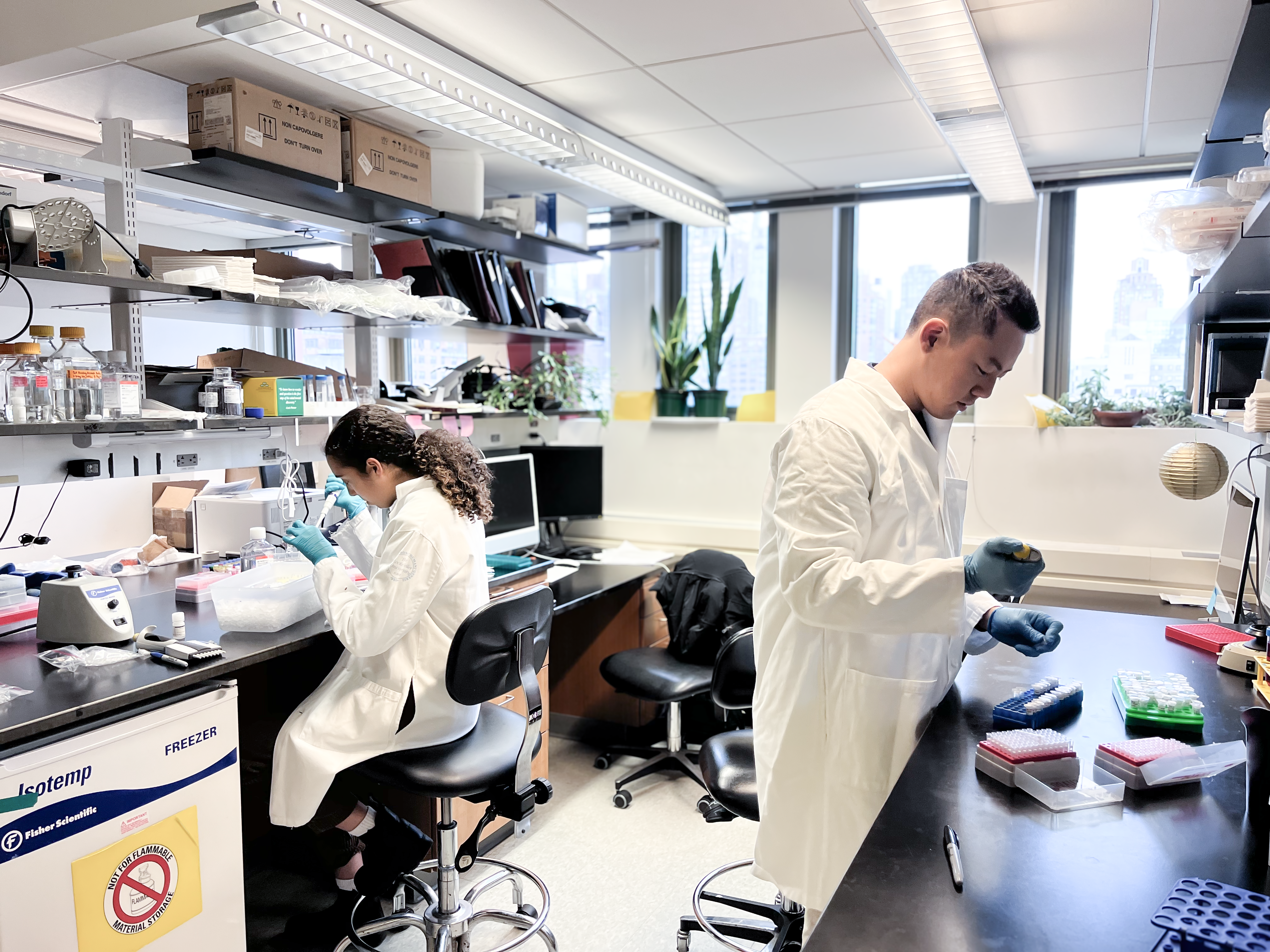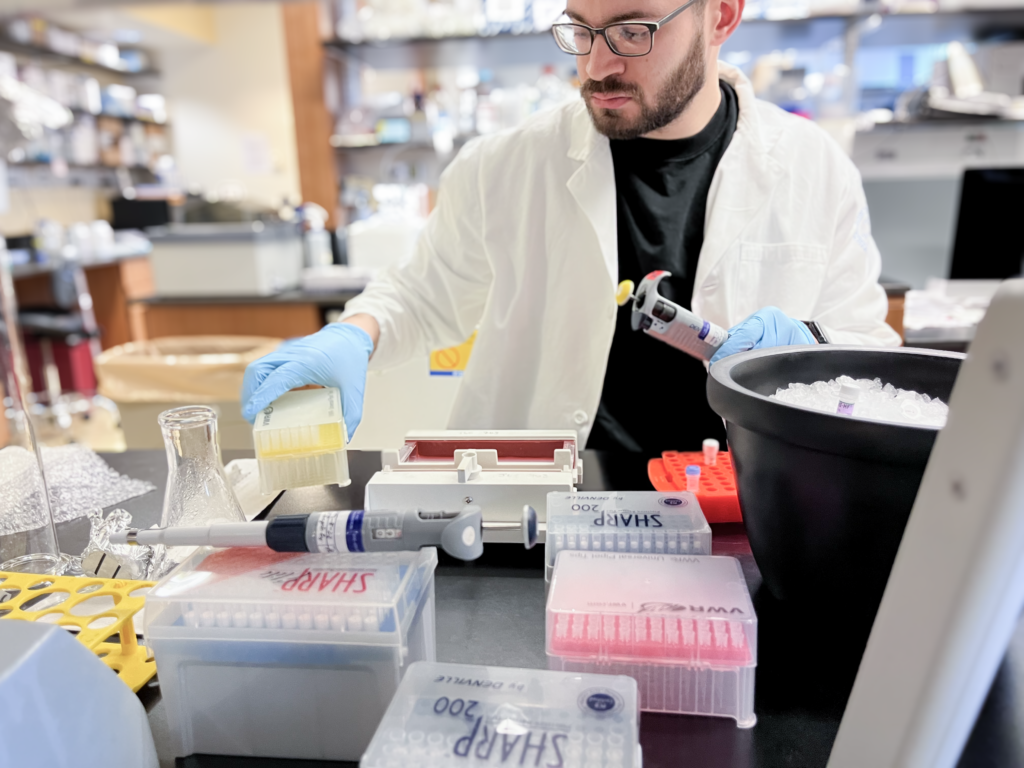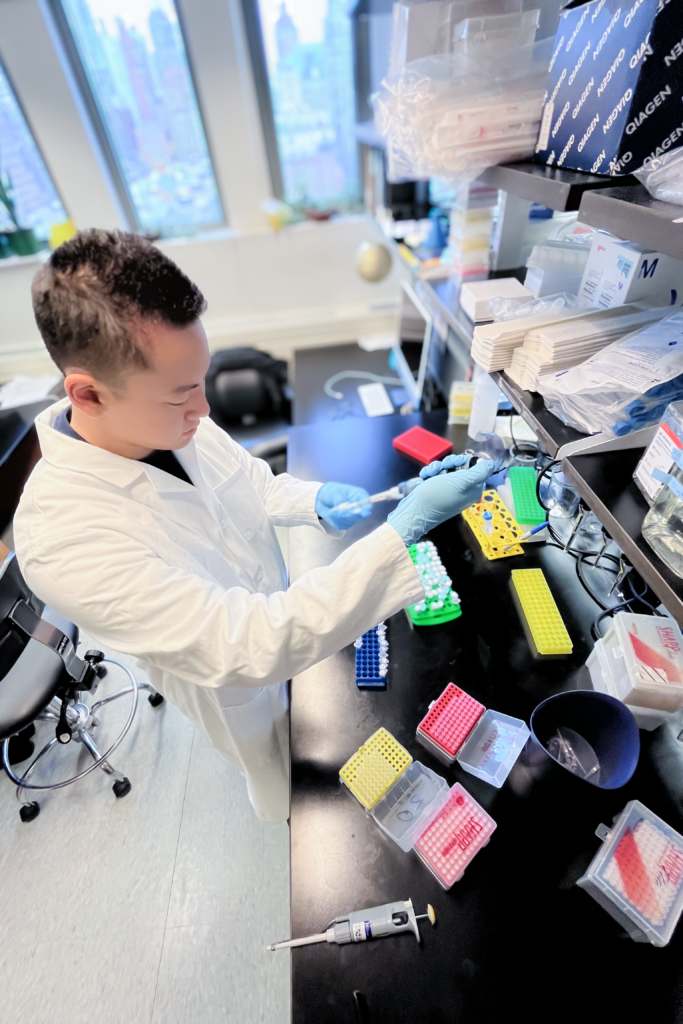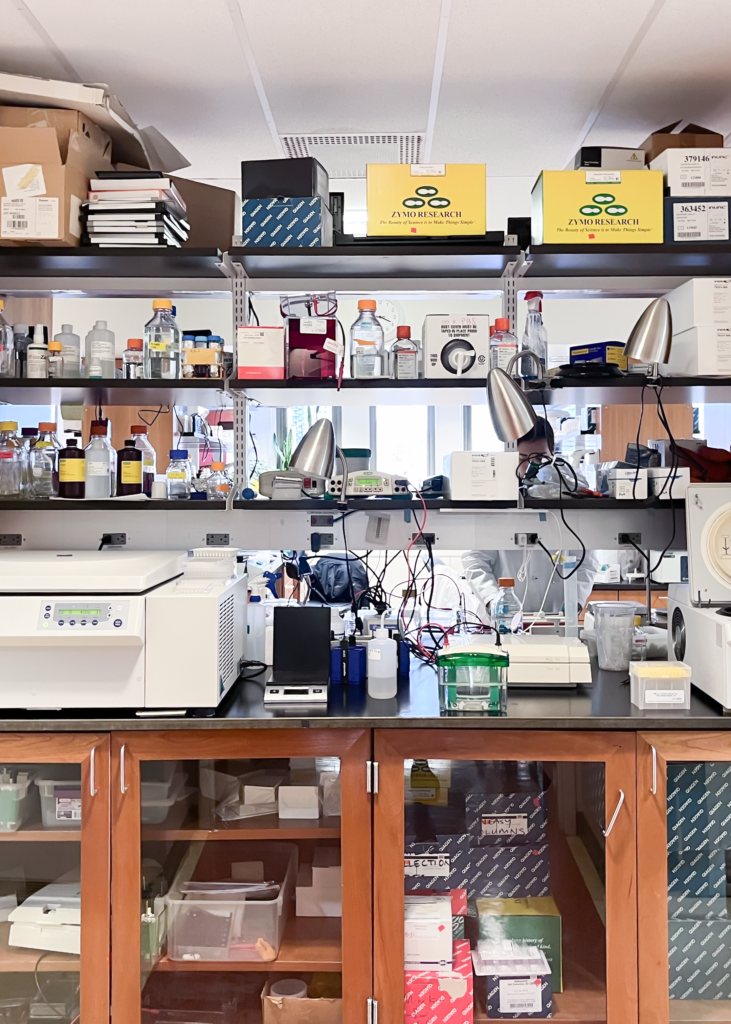
About the Laboratory of
Human Genetics
of Infectious Diseases
The Human Genetics of Infectious Diseases (HGID) laboratory studies how variants in human genes, or their immunological phenocopies, drive the clinical manifestations and outcome of infections by viruses, bacteria, fungi, and parasites.
We search for single-gene mutations that selectively compromise immunity of otherwise healthy children and adults who are exquisitely vulnerable to specific infectious diseases, including the novel coronavirus (SARS-CoV-2). We thus characterize the molecular, cellular, and immunological mechanisms of life-threatening infectious diseases. The discovery of the human genetic and immunological determinants of severe infectious diseases, sometimes in single patients, provides a mechanism of disease that can be triggered by other causes, genetic or otherwise, in many other patients. One example is the discovery of a rare inborn error of type II interferon (IFN) in a single patient with BCG disease in 1996, which led in 2018 to the discovery that 1% of cases of tuberculosis in Europeans are due to homozygosity for a common TYK2 variant impairing IL-23-dependent induction of type II IFN (Casanova JL, Abel L. Cell 2022). Another example is the discovery of inborn errors of type I interferon (IFN) immunity in a single patient with critical influenza pneumonia in 2015, which led to the discovery of autoantibodies to type I IFNs in at least 15% of patients with critical COVID-19 pneumonia in 2020 (Casanova JL, Abel L. Cell 2022).
HGID aims to understand why some children and adults develop life-threatening or lethal disease in the course of primary infection, while most people exposed to the same microbe remain unharmed. Our team has a particular interest in so-called inborn errors of immunity, the germline genetic variants that affect a person’s ability to fight off infectious agents. Work in the lab has revealed that variants of this type can confer selective vulnerability to severe illness during a specific primary infection. These inborn errors of immunity to infection can be rare or common and can affect children or adults. This work provides theoretical and experimental support for a human genetic and immunological theory of severe infectious diseases (Casanova JL, Abel L. J Exp Med 2005; Alcais et al. Ann N Y Acad Sci 2010; Casanova JL, Abel L. Annu Rev Genomics Hum Genet 2013; Casanova JL. PNAS 2015a, 2015b; Casanova JL, Abel L. Ann Rev Pathol 2021; Casanova JL. PNAS 2023; Casanova JL, Abel L. Cell 2022; Casanova JL, Abel L. Science 2021; Casanova JL, Abel L. Hum Genet 2020). By uncovering the cause and mechanism of disease, sometimes in single patients, this work also points in a direction that can reveal other causes, genetic or otherwise, triggering the same mechanism in many other patients.
Our lab is transatlantic, with the first branch established at the Necker Hospital for Sick Children in Paris in 1994 (Necker Branch; presently situated at the Imagine Institute of Genetic Diseases) and the second at the Rockefeller University in New York in 2008 (Rockefeller Branch). The Necker branch is affiliated with Paris Cité University/INSERM U1163. Since 2014, the Rockefeller Branch has been affiliated with the Howard Hughes Medical Institute. The Necker Hospital was founded in year 1778 as the first hospital devoted to the care of children in Europe, and perhaps in the world (Casimir G. Front Pediatr 2019). The Rockefeller University was founded in 1955 as the first research institute for medical research in the USA where physician-scientists would exclusively focus their effort on scientific research, as opposed to the clinical care of patients.
Our lab’s work identifying and characterizing single-gene defects underlying specific infectious illnesses has broadened the field’s dominant paradigm, which for decades held that single-gene inborn errors of immunity were invariably rare and would only be found in patients with numerous infections (Mendelian ‘primary immunodeficiencies’), while common variants in multiple genes would influence the risk for any specific type of infectious disease (modest Odds Ratios detected by association studies). Dr. Laurent Abel leads our mathematical “dry lab” at Necker and Rockefeller, whereas Dr. Jean-Laurent Casanova heads our experimental “wet lab” in both locations. This unique organization brings together two complementary approaches: molecular and computational genetics. This original strategy has already proved to be highly synergic and has greatly facilitated the development of an integrated global approach for the studies of the human genetics of infectious diseases. Furthermore, it offers unprecedented opportunities utilizing the strengths of both institutions and offering unparalleled training and exchange opportunities to the lab members.


Building on our identification of a large group of rare inborn errors in IFN-γ immunity responsible for severe clinical disease caused by poorly virulent mycobacteria (i.e. live BCG vaccines and environmental mycobacteria), a syndrome named Mendelian susceptibility to mycobacterial disease (MSMD), our lab also discovered the first cases of rare and common monogenic forms of bona fide tuberculosis. We found that homozygosity for a common variant in TYK2 underlies about 1% of the cases of tuberculosis in patients of European descent. This variant impairs IL-23R-dependent induction of type II IFN in NK and T cells. This finding is another example of how the study of rare and even very rare patients, sometimes single patients, can reveal general mechanisms of diseases that affect millions of people (Casanova et al. J Exp Med 2014; Casanova JL, Abel L. Cell 2022).

Our lab has uncovered hidden genetic vulnerabilities to various pathogens. For example, we discovered that mutations in IRF7 can predispose to severe influenza pneumonia. This discovery led to that of inborn errors of and autoantibodies to type I IFNs in at least 15-20% of patients with critical COVID-19 pneumonia and that the same autoantibodies underlie 40% of cases of West Nile virus encephalitis. Likewise, we have found that inborn errors in CIB1 immunity confer unusual vulnerability to certain papillomavirus-driven skin warts and cancer; that disruptions in different neuron-intrinsic immunity genes predispose patients to viral infections of the forebrain or the brainstem; and that mutations in IL18BP can underlie fulminant viral hepatitis. We recently reviewed our 20-year-long study of the human genetic and immunological determinants of severe viral diseases (Casanova JL, Abel L. Science 2021; Casanova JL, Abel L. Cell 2022).
These discoveries have revealed that many immunological circuits that were previously thought to play a broad role in host defense are largely redundant and essential for immunity against one or a few specific infections only. They also revealed that immunity to infection is not provided solely by the cells of the “immune system,” i.e., leukocytes and related cells: it requires many more cell types throughout the entire body. They contribute to defining the function of host defense genes in the natural ecosystem in which human populations live and are subjected to natural selection, the ‘human model’ being ideal for studying immunity in natura (Casanova JL, Abel L. Annual Review of Immunology 2002; Casanova JL, Abel L. Nature Rev Immunology 2004; Quintana-Murci et al. Nat Immunol 2007).
Revealing monogenic holes in the host defense of otherwise healthy humans, or their autoimmune phenocopies also has profound clinical implications, offering many families worldwide the possibility of molecularly genetic or immunological diagnosis, and often genetic counseling, as well as treatments aimed at restoring a deficient immune response. Patients with genetically impaired IFN-γ production, for example, are prone to tuberculosis and benefit from IFN-γ, while patients with insufficient type I IFN production may benefit from IFN-α or IFN-β.
Promoting scientific advancements – in and out of the lab
With several ongoing research studies, multiple international collaborations, and through the organization of various conferences, HGID lab members are simultaneously active leaders and engaged participants within biomedical research.
The scope of our research is expansive, consisting of the five major themes of brain and lung viruses, skin viruses, autoantibodies to cytokines, mycobacterial diseases, and computational genetics. These topics are investigated by focused research teams.
Scientific advancements beget further discoveries, as acquiring answers generates new questions. Therefor, we are also committed to maintaining and expanding our network of scientists and clinicians, and on developing and publishing computational tools.
